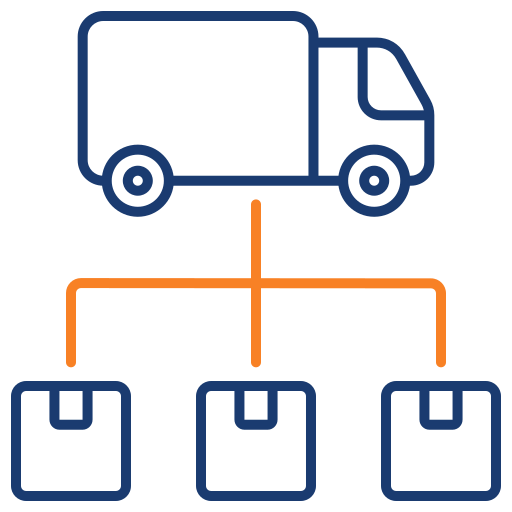Dynamic Carrier Allocation: Balancing Cost and Delivery Time
In the competitive world of logistics and e-commerce, customer expectations for fast, reliable, and affordable delivery continue to rise. Businesses are constantly challenged to balance minimizing shipping costs and meeting delivery speed demands. One solution that has emerged as both practical and powerful is Dynamic Carrier Allocation (DCA).
This blog explores what dynamic carrier allocation means, how it works, and why it’s an essential tool for modern logistics operations aiming to optimize cost and delivery performance.

What Is Dynamic Carrier Allocation?
Dynamic Carrier Allocation refers to the real-time or rule-based selection of the most suitable shipping carrier for each order based on factors like:
- Destination
- Delivery deadlines
- Package size and weight
- Carrier rates
- Performance History
- Capacity availability
Instead of relying on a single courier or a static shipping plan, DCA systems evaluate available carriers at the time of order fulfillment and choose the best fit based on priorities such as cost or speed.
Why Static Shipping Models Fall Short
Traditional shipping strategies often rely on fixed agreements with one or two carriers. While simple, this approach lacks flexibility and leads to:
- Missed savings opportunities
- Inability to adapt to peak demand
- Limited fallback options when delays occur
- Higher risk of delivery failures or late arrivals
In contrast, dynamic allocation introduces agility and data-driven decision-making, allowing companies to react in real-time.
Key Benefits of Dynamic Carrier Allocation
1. Cost Optimization
DCA platforms automatically identify the most cost-effective carrier for each shipment. Businesses can reduce shipping expenses by comparing multiple providers, avoiding overcharges, and leveraging competitive rates.

2. Improved Delivery Time Management
Need same-day or 2-day delivery for a specific region? DCA allows real-time carrier switching based on who can meet the promised delivery window at the lowest cost.
3. Better Risk Management
If a preferred carrier faces delays, strikes, or volume caps, DCA allows companies to reroute shipments to backup providers instantly—minimizing service disruptions.

4. Carrier Performance Monitoring
Many DCA systems include carrier scorecards, tracking metrics like on-time delivery rate, customer feedback, and damage reports to influence future selections.
5. Geographic and Volume Scalability
As a business grows, DCA enables seamless expansion into new markets by dynamically selecting local or regional carriers without rebuilding the entire shipping logic.
How It Works: A Simplified Workflow
- Order Received
- A customer places an order with specific delivery expectations.
- System Triggers Allocation Engine
- The platform collects shipment parameters and queries available carriers.
- Evaluation of Options
- The system scores each carrier based on pre-set rules (price, speed, reliability).
- Carrier Selected
- The optimal carrier is chosen and assigned automatically.
- Real-Time Tracking & Updates
- Delivery status is monitored, and alerts are sent if delays or changes occur.

Use Cases Across Industries
- E-commerce: Choosing between postal services, express couriers, or gig-based delivery for same-day service
- Manufacturing: Selecting freight carriers based on part availability and plant location
- Retail: Adapting to regional holidays, weather conditions, or promotional volume spikes
- 3PLs & Warehousing: Balancing client SLAs with operational cost targets
Choosing a DCA Solution: What to Look For
When implementing dynamic carrier allocation, consider platforms that offer:
- API integration with multiple carriers
- Custom rule-setting capability
- Carrier performance analytics
- Scalability to handle seasonal volume
- Real-time cost simulation tools
Some leading shipping and logistics platforms already include DCA modules or integrate with third-party decision engines for automated allocation.
Final Thoughts
In today’s high-stakes delivery landscape, Dynamic Carrier Allocation is more than a logistics tool—it’s a strategic advantage. By making smarter, data-informed choices about which carrier to use for each shipment, businesses can improve customer satisfaction, lower operational costs, and confidently scale their delivery network.
As delivery becomes a key differentiator in customer experience, those who embrace DCA are better equipped to compete, adapt, and thrive in a fast-moving market.
Industry Insights
news via inbox
Nulla turp dis cursus. Integer liberos euismod pretium faucibua







